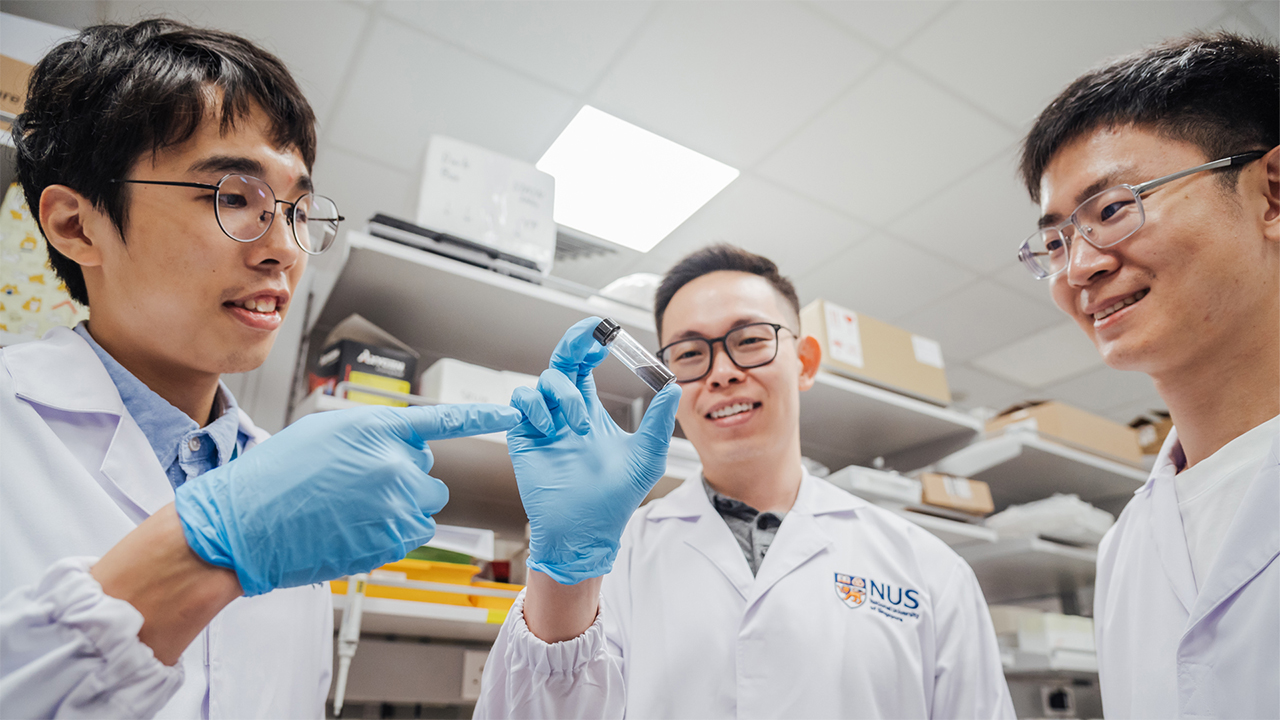Health Singapore (Commonwealth Union) – Individuals with diabetes, whose inherent wound-healing abilities are compromised, often encounter the challenge of chronic wounds that stubbornly resist healing. These non-healing wounds can potentially lead to severe infections, with the dire consequence of limb amputation. To confront this pressing global healthcare issue, a team of researchers from the National University of Singapore (NUS) has pioneered an ingenious magnetic wound-healing gel designed to expedite the healing of diabetic wounds, reduce recurrence rates, and, consequently, diminish the incidence of limb amputations.
The treatment protocol involves the application of a bandage infused with a hydrogel containing skin cells for wound healing, along with magnetic particles. To optimize therapeutic outcomes, an external wireless magnetic device is employed to activate the skin cells and hasten the wound-healing process. The ideal duration for magnetic stimulation typically falls within the range of one to two hours.
Laboratory experiments have demonstrated that this treatment, when combined with magnetic stimulation, accelerates the healing of diabetic wounds approximately three times faster than prevailing conventional methods. Furthermore, while the primary focus of the research has centered on healing diabetic foot ulcers, the technology exhibits potential for addressing a wide spectrum of intricate wounds, including burns.
Assistant Professor Andy Tay, the leader of the team comprised of researchers from the Department of Biomedical Engineering at NUS College of Design and Engineering, as well as the NUS Institute for Health Innovation & Technology, indicated that conventional dressings do not actively contribute to the healing of wounds. They merely serve to prevent the wounds from deteriorating, necessitating dressing changes every two or three days. This presents a significant financial burden to the healthcare system and inconveniences patients.
In contrast, the pioneering NUS innovation adopts a comprehensive ‘all-in-one’ approach to wound healing, enhancing the process on multiple fronts.
“Our technology addresses multiple critical factors associated with diabetic wounds, simultaneously managing elevated glucose levels in the wound area, activating dormant skin cells near the wound, restoring damaged blood vessels, and repairing the disrupted vascular network within the wound,” said Assistant Professor Tay.
The NUS research team detailed their groundbreaking innovation in a paper published in the scientific journal “Advanced Materials” on September 8, 2023. The research was a collaborative effort involving scientists from the Agency for Science, Technology and Research, Nanyang Technological University, Sun Yat-sen University, and Wuhan University of Technology.
Researchers pointed out that presently, the global population living with diabetes exceeds half a billion individuals, and this number is projected to surge significantly. Chronic diabetic wounds, particularly foot ulcers (among the most prevalent and challenging to treat), have emerged as a critical healthcare dilemma on a global scale.
Traditional treatments for these wounds frequently yield unsatisfactory results, leading to recurrent and persistent health complications and, in a considerable number of instances, necessitating limb amputations.
Annually, there are approximately 9.1 to 26.1 million cases of diabetic foot ulcers worldwide, with around 15 to 25 percent of diabetes patients expected to develop a diabetic foot ulcer during their lifetime. Singapore, unfortunately, maintains one of the highest rates of lower limb amputations due to diabetes worldwide, averaging around 4 cases daily as indicated by researchers of the study.
Skin cells endure continuous mechanical stresses from regular daily activities. However, patients with wounds are typically advised to refrain from strenuous activities like walking, which can impede the survival of vital cells crucial for the healing process.
“What our team has achieved is to identify a sweet spot by applying gentle mechanical stimulation,” explained Assistant Professor Tay. “The result is that the remaining skin cells get to ‘work-out’ to heal wounds, but not to the extent that it kills them.”








